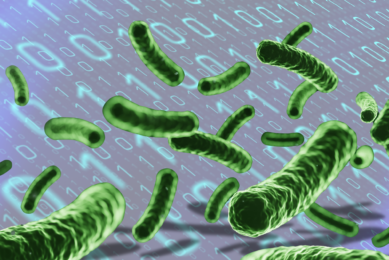A probiotic or synbiotic: what works best for the gut?

Can a probiotic in combination with inulin improve the piglet’s gut? Or do they work best when they are used separately? The results of this study were recently published in the journal ‘Beneficial Microbes’.
To support animal health without antibiotics, live microbial feed supplements (‘probiotics’) are introduced that might contribute to an optimal intestinal microbial balance. An Austrian research team therefore studied the effects of a probiotic, inulin, and their combination (synbiotic), on the microbial ecology of the GI tract of newly weaned piglets. Different PCR-based approaches were used to study site-specific effects. The researchers found that the probiotic and inulin, to different extents, changed the diversity, relative abundance of phylotypes, and community profiles of the porcine microbiota.
Effect on E. coli and Clostridiaceae
A probiotic effect on the gut microbiota diversity was only detected in the ileum. Combined with inulin (synbiotic) community diversity was only increased in the caecum. Inulin alone showed the greatest impact on gut bacterial diversity compared to the other additives. In addition, both the probiotic, inulin and symbiotic group showed a reduction in Escherichia species in each gut location, indicating a potential beneficial effect on the gut microbiota. An increase of relative abundance of Clostridiaceae in the large intestine was found in the inulin group and of Enterococcaceae in the ileum of probiotic fed pigs.

One extra live pig per sow by using probiotics. Read the full story here
Sampling from various locations
Based on these results, the researchers state that alterations of the bacterial community were not uniformly between gut locations, demonstrating that functionality of feed additives is site specific. Therefore, gut sampling from various locations is crucial when investigations aim to identify the composition of a healthy gut microbiota after its manipulation through feed additives.
Source: Wageningen Academic Publishers











